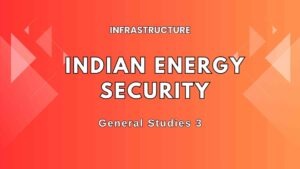Quantum Computing- Important UPSC Notes
Table of Contents
Quantum Computing
🧭 Context: Why is it in News?
Tech giants like Google, IBM, and China’s Jiuzhang have developed quantum systems crossing 100 qubits, a major milestone.
It signals a global race in next-generation computing with implications for national security, economy, and scientific research.
💡 What is Quantum Computing?
Quantum computing is a type of computation that uses the principles of quantum mechanics, a branch of physics that governs the behavior of very small particles like electrons and photons.
Unlike traditional computers that use bits (0 or 1), quantum computers use qubits (quantum bits), which can be both 0 and 1 at the same time.
🔹 Origin
Proposed by Richard Feynman in 1981, who suggested that quantum systems should be simulated using computers that themselves follow quantum rules.
🔍 Key Concepts to Understand
🌀 1. Superposition
In classical computers, a bit is either 0 or 1.
In quantum computing, a qubit can be both 0 and 1 at the same time. This is called superposition.
✅ This allows massive parallel processing—e.g., a 100-qubit system can represent 2¹⁰⁰ states simultaneously.
🔗 2. Entanglement
When two or more qubits become entangled, changing the state of one qubit instantly affects the other—no matter how far apart they are.
Described by Einstein as “spooky action at a distance”.
⚙️ 3. Quantum Gates and Circuits
Similar to logic gates in classical computers, quantum gates manipulate qubits and their states to perform operations.
Circuits are made up of a series of these gates.
🎯 Applications of Quantum Computing
Pharmaceuticals and Drug Discovery
Simulate how molecules interact at the quantum level.
Useful in developing new medicines, e.g., Pfizer–IBM collaboration.
Material Science
Discover new materials with better electrical, thermal, or mechanical properties by simulating atoms’ behavior.
Cybersecurity
Quantum Key Distribution (QKD) enables secure communication.
Can also break current encryption algorithms using Shor’s Algorithm, forcing a shift toward post-quantum cryptography.
Logistics & Optimization
Can solve complex optimization problems like traffic flow, supply chains, and investment portfolio optimization.
High-Precision Sensing
Useful in detecting minerals, mapping gravitational fields, and medical imaging.
📈 Progress So Far: Global Developments
Google Sycamore (2019): Performed a task in 200 seconds that would take a supercomputer 10,000 years.
IBM: Has machines with 100+ qubits, aiming for 1,000 qubits soon.
China’s Jiuzhang: Achieved “quantum advantage” using photonic qubits (qubits using light particles).
Startups: IonQ, PsiQuantum are experimenting with new techniques like trapped ions and photons to scale up quantum systems.
🚧 Challenges in Quantum Computing
Decoherence and Fragility
Qubits are highly sensitive to their surroundings and lose their state quickly (within microseconds).
Need to operate in ultra-cold environments and near-total isolation.
Error Correction
Because of noise, quantum computers need many physical qubits to create one stable logical qubit.
Scalability
Despite having 100–200 qubits, current machines can only deliver 5 stable logical qubits, insufficient for real-world applications.
High Cost and Infrastructure Needs
Requires cryogenic cooling, vacuum chambers, and quantum labs—making it costly and complex to operate.
🌍 Global Quantum Race
China: Invested $15 billion; building quantum communication networks.
USA: Over $4 billion in public and private funding (IBM, Google, Microsoft).
European Union: Running a €1 billion Quantum Flagship Program.
UK, Canada, Japan: Investing in quantum-safe encryption and hybrid computing models.
🇮🇳 India’s Position in Quantum Computing
Launched National Quantum Mission (2020) with ₹8,000 crore investment.
Key institutions: IITs, IISc, TIFR working on 5–10 qubit systems.
Goal: Build 50–100 qubit systems by 2030.
Focus areas:
Quantum-safe communication
Quantum sensing
Post-quantum cryptography
India is among the top 5 global investors in quantum R&D.
🔮 Future Outlook
By 2040s, we may see full-scale, fault-tolerant quantum computers with millions of qubits.
Quantum computers won’t replace classical ones but will complement them in solving problems beyond classical limits.
Increasing focus on:
Indigenous R&D
Global collaboration
Workforce and ecosystem development
✅ Conclusion
Quantum computing is not just a technological upgrade—it’s a paradigm shift.
It holds the potential to revolutionize:
Science and innovation
National security and encryption
Economic competitiveness
With timely investment and research, India can emerge as a global quantum leader.
🔑 Important Terms for UPSC
Qubit – Basic unit of quantum information.
Superposition – A qubit’s ability to be in multiple states at once.
Entanglement – Interconnection between qubits regardless of distance.
Quantum Advantage – When a quantum computer performs a task faster than the best classical computer.
Quantum Key Distribution (QKD) – A secure communication method using quantum mechanics.
Shor’s Algorithm – A quantum algorithm that can break classical encryption.
Mains-Based Questions on Quantum Computing
1. What is Quantum Computing? How is it different from classical computing? Discuss its applications and the challenges India faces in building indigenous capabilities.
(250 words)
✅ Answer Framework:
Introduction:
Define quantum computing: Quantum computing is a form of computation that uses qubits instead of classical bits, leveraging principles of quantum mechanics like superposition and entanglement.
Brief contrast: Unlike classical computing (binary 0s and 1s), quantum computing allows simultaneous computation using qubits.
Body:
1. Key Features that Differentiate Quantum Computing:
Superposition: Qubits can be in multiple states (0 and 1 simultaneously).
Entanglement: Interconnected qubits influence each other instantly, even when far apart.
Quantum gates: Logical operations in quantum systems.
2. Applications:
Drug discovery: Simulating molecular behavior (e.g. Pfizer–IBM collaboration).
Cybersecurity: Quantum Key Distribution (QKD), potential to break classical encryption.
Optimization: Traffic management, financial modeling, logistics.
Material science and sensing: Development of new materials, precision measurement.
3. India’s Progress and Challenges:
Achievements: National Quantum Mission (₹8,000 crore), 5–10 qubit systems under development.
Challenges:
Technical: Decoherence, error correction, scalability.
Infrastructure: High cost, need for ultra-cold environments.
Human capital: Shortage of trained quantum scientists.
Dependence on foreign tech and tools.
Conclusion:
India’s early investment is promising, but consistent funding, skill-building, and global collaboration are needed to become a leader in this domain.
2. Quantum computing holds promise in revolutionizing national security and digital infrastructure. Evaluate this statement in the Indian context.
(250 words)
✅ Answer Framework:
Introduction:
Begin with relevance: Quantum computing has dual-use implications—both constructive and disruptive—for cybersecurity, cryptography, and strategic capabilities.
Body:
1. Positive Impacts on National Security:
Quantum-safe cryptography: Protects military and governmental data against quantum-enabled cyberattacks.
Quantum sensing: Useful in underwater submarine detection, surveillance, and geolocation.
Secure communication: Through Quantum Key Distribution (QKD), immune to eavesdropping.
2. Risks from Foreign Quantum Powers:
Decryption threat: Quantum computers may break RSA and classical encryption, exposing India’s secure systems.
Geopolitical race: China, USA, and EU are investing heavily; India’s delay may pose strategic vulnerability.
3. India’s Preparedness:
National Quantum Mission, collaboration with ISRO, DRDO, and academic institutions.
Work on post-quantum cryptography, quantum communication over satellites.
4. Strategic Gaps:
Need for greater public-private partnership.
Scaling quantum systems beyond lab setups.
Indigenous development of critical hardware.
Conclusion:
To safeguard sovereignty and digital infrastructure, India must accelerate quantum R&D, talent building, and international cooperation in quantum technologies.
3. Discuss the ethical and socio-economic implications of quantum computing in the 21st century.
(150–250 words)
✅ Answer Framework:
Introduction:
Quantum computing is a disruptive technology with the potential to transform multiple sectors but may also bring unintended consequences.
Body:
1. Ethical Implications:
Privacy concerns: Potential to break encryption could endanger personal and national data.
Inequality: Early adopters (developed nations, tech giants) may monopolize benefits.
Surveillance misuse: Quantum technologies used for mass surveillance without adequate checks.
2. Socio-Economic Impacts:
Employment disruption: Automation of complex tasks may affect high-skill jobs.
Digital divide: Developing countries could lag behind without quantum access.
Innovation in healthcare, finance, agriculture: If equitably applied, can boost social welfare.
3. Regulatory Need:
Absence of global frameworks to govern responsible use.
Importance of ethical AI–Quantum synergy.
Conclusion:
Like any revolutionary technology, quantum computing must be guided by values of equity, transparency, and global cooperation to ensure it benefits humanity as a whole.
4. Examine India’s National Quantum Mission. How does it align with India’s ambition to become a technological leader?
(150–250 words)
✅ Answer Framework:
Introduction:
Introduce the National Quantum Mission (NQM): Launched in 2020 with ₹8,000 crore allocation to build indigenous quantum technology infrastructure.
Body:
1. Key Objectives:
Develop 50–100 qubit quantum computers by 2030.
Promote quantum communication, quantum sensing, and post-quantum cryptography.
Establish hubs in IITs, IISc, TIFR, and collaborations with DRDO, ISRO.
2. Significance for India’s Tech Leadership:
Reduces dependence on foreign tech.
Builds capacity in strategic sectors (defense, health, energy).
Encourages startups and academic research.
3. Challenges in Implementation:
Infrastructure costs and limited expertise.
Need for skilled quantum workforce.
Global competition from tech giants and national programs (China, USA, EU).
4. Way Forward:
Public-private partnerships.
International collaborations with quantum leaders.
Integration with India’s Digital India and AI missions.
Conclusion:
If executed well, NQM can make India a quantum-ready nation, enhancing digital sovereignty and economic competitiveness.
Prelims Questions based on Quantum Computing
-
Stampede Management in India – Important UPSC Notes
A stampede occurred at Chinnaswamy Stadium, Bengaluru, during RCB’s IPL... -
EnviStats India 2025 – Important UPSC Notes
The 8th edition of EnviStats India 2025 was released by... -
Quantum Computing – Important UPSC Notes
Tech giants like Google, IBM, and China’s Jiuzhang have developed... -
Indian Energy Security – Important UPSC Notes
In 2025, India became the 4th largest economy in the... -
Indian Food and Fertiliser Subsidies – Important UPSC Notes
With poverty down to 5.3%, distributing food subsidies to 800... -
India in SDR 2025 – Important UPSC Notes
India in SDR 2025 has ranked 99th, entering the Top... -
Indian FDI Mystery- Important UPSC Notes
India received a 13.7% increase in total FDI (Gross FDI...








